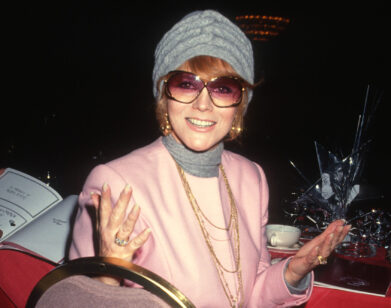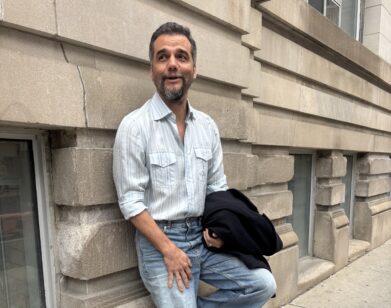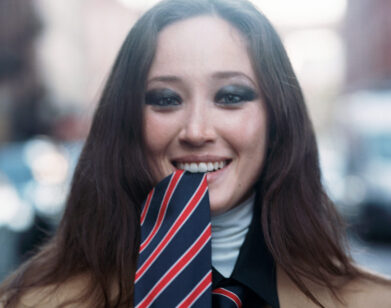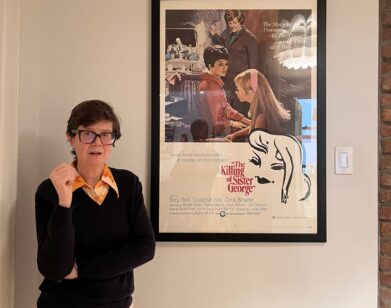Makeup of the Future
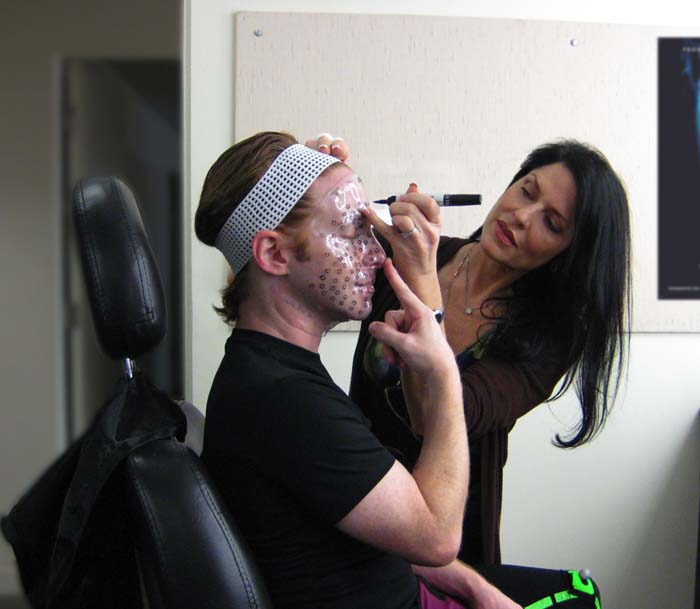
Tegan Taylor got her start in the world of traditional film makeup. But, but for the past ten years, she has been pioneering a brave new world with 3-D, “performance capture” movie makeup, a hybrid of science and art most recently put to use in Avatar, for which she was the head makeup artist. We talked to her about working with James Cameron, spending hours covering Daniel Craig in glow-in-the-dark paint, and the future of high-tech makeup. (LEFT: TEGAN TAYLOR)
BREE MCKENNEY: How did you come to work on Avatar?
TEGAN TAYLOR: I’ve been doing digital movies for the last decade or so [Taylor was head artist for other 3-D films including Polar Express, Beowulf, and A Christmas Carol] and, because of that work, James Cameron asked me to be a part of Avatar.
MCKENNEY: Because of the technological demands of Cameron’s vision, you had to create a whole new kind of makeup.
TAYLOR: In the past, for performance-capture, actors would be covered with hundreds of tiny beads that would be picked up by the computers to denote their movement. For Avatar, it was decided that head cameras would be used on each actor, so I developed a paint that was applied directly to the actor, instead of the motion capture beads. The paint had to be able to move and breathe with the actors, but couldn’t run or bleed if they sweat, and it had to be in colors that the cameras could recognize. There was nothing on the market that met these needs so, in the months leading up to principal photography, in my virtual makeup lab, I developed my own line of phosphorescent paints. “MoCap Ink” is really cool: a brand new kind of makeup. It’s amazing–it’s phosphorescent and glows in the dark.
MCKENNEY: You recently completed The Adventures of Tin Tin: The Secret of the Unicorn, the first in a three party trilogy co-directed by Steven Spielberg and Peter Jackson
TAYLOR: The movie is one hundred percent performance-capture–3-D–so we used the same makeup and technology as in Avatar. The aesthetic goal of the film is to match the stylized look of the popular French comic the movie is based on, so we used a different color palette, and it’s a very stylized look.
MCKENNEY: Daniel Craig is the star of Tin Tin. How did he respond to the makeup?
TAYLOR: He is great–a very physical actor–and he really embraced the physicality of performance capture. It’s a pretty painstaking process, and I had to spend hours covering him in hundreds of marks and reflective paint, but he was a great sport. I have worked with so many of the top actors, and in general they are a little taken aback at first, but then they love it. The process allows them to disconnect from their egos and their physical bodies and take their performance to a new level.
MCKENNEY: Where do you see your industry headed next?
TAYLOR: We are entering a whole new technological age, where traditional prosthetics are becoming a thing of the past–the possibilities for what we can create using digital makeup are endless. It expands the horizon. As an artist I can create on my computer how I want a character to look, and then realize it using any combination of traditional and cutting-edge techniques. What we do as makeup artists, and as filmmakers, is only increased by this new technology.

